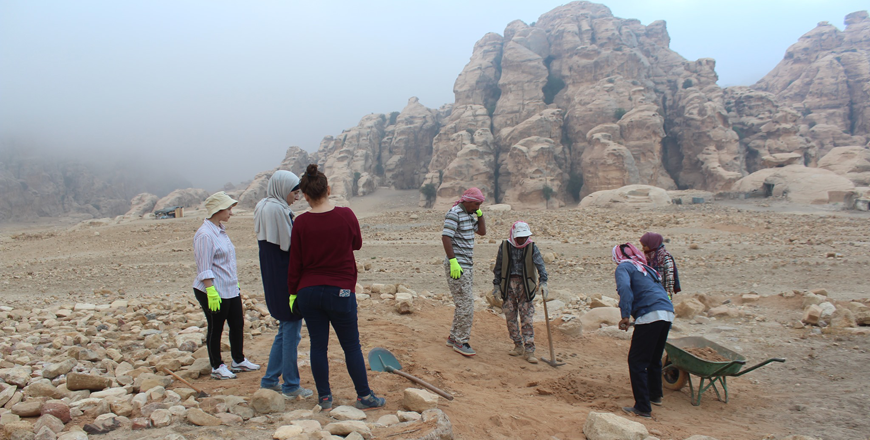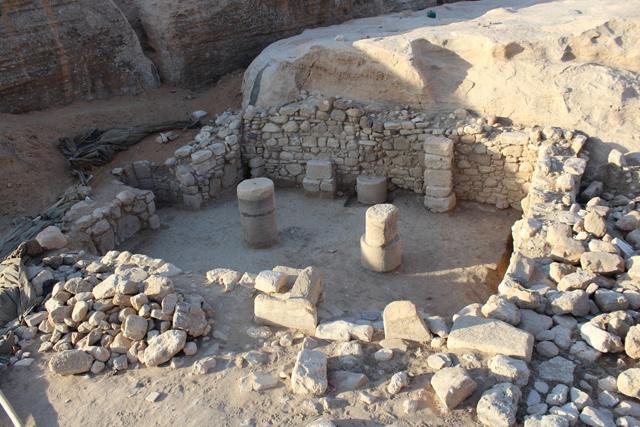You are here
Roundtable takes on social responsibility of archaeologists, restoration
By Saeb Rawashdeh - Dec 21,2022 - Last updated at Dec 21,2022

Islamic Bayda team conducts a field work in autumn 2019 (Photo courtesy of Islamic Bayda)
AMMAN — A series of restoration projects at the Amman Citadel began in 1995, noted Professor Ignacio Arce from German-Jordanian University at the international conference “Cultural Heritage, Tourism and Sustainability: Archaeology and Challenge of Our Common Future” on Monday at Politecnico di Milano.
The event, arranged by Assistant Professor at the University of Warsaw Micaela Sinibaldi, attracted scholars from Politecnico, international experts, Jordanian researchers and Director General of the Department of Antiquities Fadi Balaawi.
During the roundtable, Balaawi noted that conservation, training and site presentation are priorities for the department.
According to Arce, tourists in the past would spend a little time in the past in the capital and would immediately travel to Jerash, Petra and Aqaba.
“Although a significant archaeological site, the Amman Citadel was in a bad shape,” Arce said, noting that the team concentrated on excavation, restoration and presentation.
The social responsibility of architects, archaeologists and curators is to convey information about the site to stakeholders and the general public, Arce said.
“Cultural heritage is considered a significant aspect of intercultural communication and cohesion, both in local and international communities,” said Assistant Professor Dua’a Maani from Applied Science Private University.
The concept of sustainable development has been the main topic of conferences since the 1970s, she added.
In her presentation prepared in collaboration with Shatha Mubaideen, Maani said that cultural heritage “is glue” for different dimensions of sustainable development.
Jordan is well known for welcoming a large number of tourists who are interested in visiting archaeological sites, noted Sinibaldi, highlighting that archaeology and sustainable tourism are “a challenge we have to face for the future”, and that archaeologists are well placed to contribute to a conversation on this subject, as they are in a position of being in dialogue with most of the policymakers.
Sinibaldi conveyed her experiences with the Islamic Bayda Project, which she directs. The project was launched in 2014 to conduct excavations, surveys, conservation projects and enhance community engagement focusing on the Islamic village at Bayda near Petra.
“The aspects of research, training and community engagement are highly synergic and this model can be applied by other fieldwork projects, too, and this experience shows that research-driven archaeology can be a powerful and fundamental part of sustainable archaeology of the future if combined with the aspects of training and community engagement,” Sinibaldi said.
Her team of archaeologists lives with the local community, who can provide information about the local material culture.
“Such synergy is achieved by providing training in archaeological fieldwork practices, as well as information on the results and methodology of the projects’ fieldwork, to both local team members, international and Jordanian graduates in archaeology, an action that also support their chances of future employment in the field of archaeology,” Sinibaldi said.
Beside the session about Jordan, the other two sessions involved papers also written by scholars from the Politecnico di Milano which explored the topics of legislation and conventions in cultural heritage and sustainable tourism, as well as aspects of site conservation and management, musealisation, community involvement and training.
Related Articles
AMMAN — In contrast with the area of Wadi Musa, Beidha is still free from modern development, so the natural landscape is still unspoiled an
AMMAN — An expert in Jordan's mediaeval history has challenged popular beliefs about the 12th-century Crusader occupation, arguing that the
AMMAN — The Late Petra Project focuses on a settlement in the Petra region occupied after the Byzantine period, ca.


















